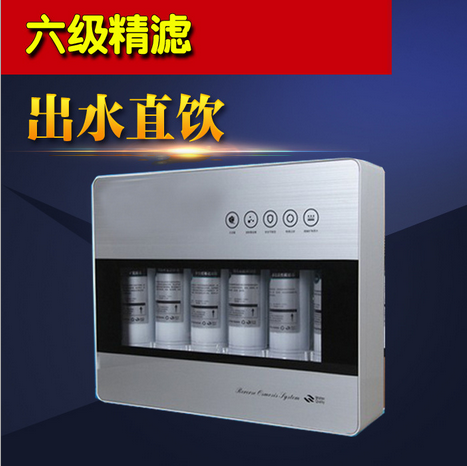
What is the core basis for the design of reverse osmosis membrane system?
In the design process of reverse osmosis membrane, the three basis of product water flow, product water quality and influent water quality are the most basic design basis. The influent water quality of the membrane system design conditions is the product water quality of the pretreatment system. Not only the various components of the water body should meet the requirements of the membrane system, but also the added scale inhibitor and dispersant may make the membrane system feed water insoluble The salt saturation increases accordingly. The specific content of the design basis for the three major categories of membrane systems is as follows.
1. Product water flow rate: The production water flow rate requirement of the system is characterized by the value of cubic meters per hour, and the water production flow rate requirements of individual systems vary with the seasons.
2. Water quality: including total salt content, special ion content such as fluorine and boron, PH value and other indicators. The general pure water preparation system mainly investigates the total salt content (mg/L) index, and the PH value or special ion content requirements can be processed in conjunction with the process before and after the membrane system. There is generally no seasonal difference in water quality requirements.
3. Influent water quality: it can be further divided into five categories: water temperature, total salt content, insoluble salt content, non-salt pollutants and water source types. The quality of influent water from natural water bodies will change with the seasons, while the quality of influent water using process drainage as the water source may have a higher frequency of change and a higher range of changes.
The inorganic component indicators of the system inlet water mainly include the total salt content and the saturation of each insoluble salt. Inorganic salt is the removal target of the membrane system, and the threat of the saturation and precipitation of insoluble salts in the feed/concentrated water flow channel constitutes the limiting condition of the system recovery rate. The scaling trend of insoluble salts such as sulfate and silicate in the membrane system is characterized by its saturation index, and the scaling trend of sulfate is characterized by the Langmuir index.
Since the salt permeability and water permeability of the membrane element have a positive temperature coefficient, the inlet temperature of the system seriously affects the operating performance of the membrane system. Because the solubility of the insoluble salt of carbonic acid has a positive temperature system, the solubility of the insoluble salt of sulfuric acid and the insoluble salt of silicic acid has a negative temperature coefficient, and the inlet water temperature also seriously affects the operating conditions of the membrane system such as the saturation of the insoluble salt. Therefore, the system inlet water temperature is called an important parameter for membrane system design.
Article Keywords: